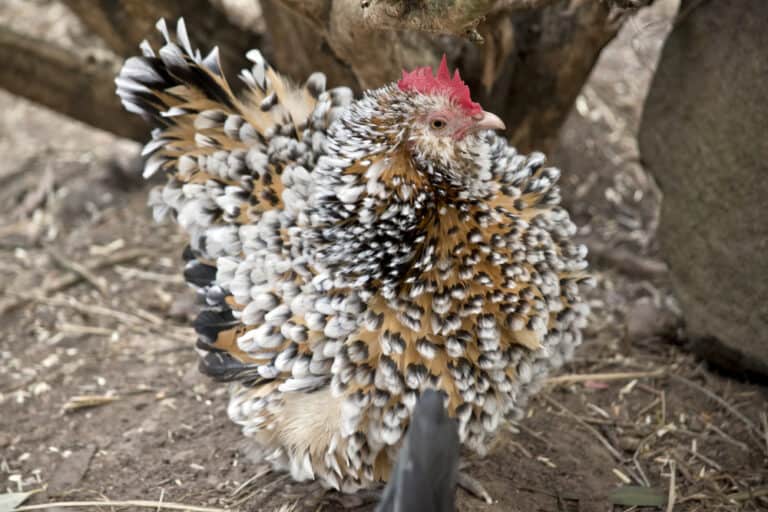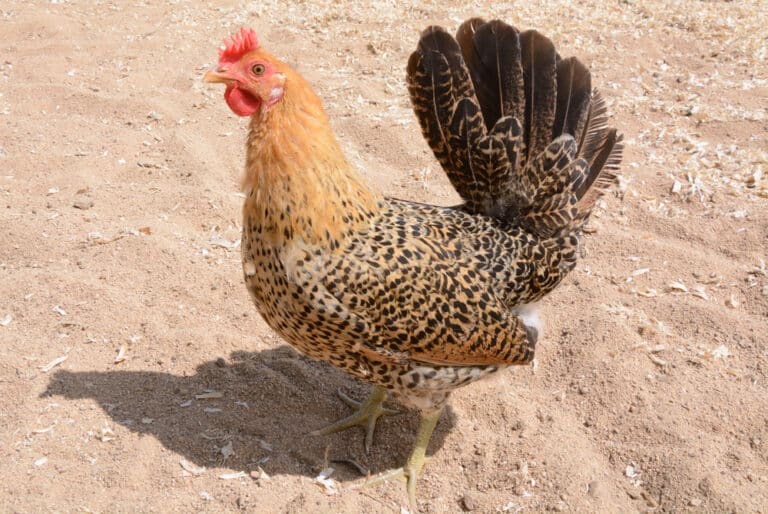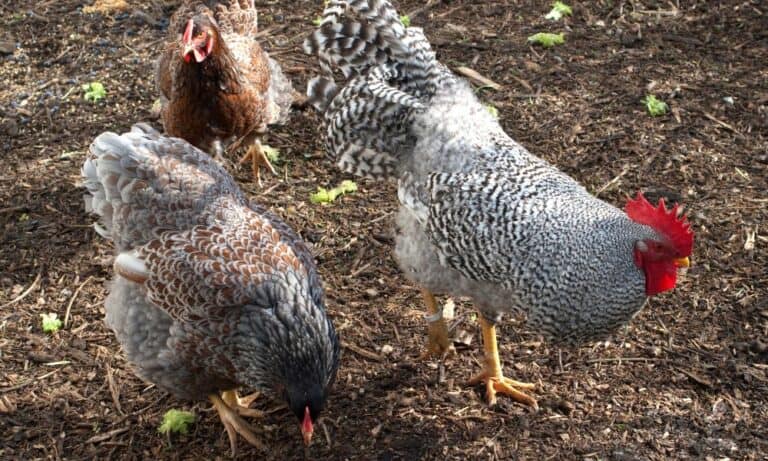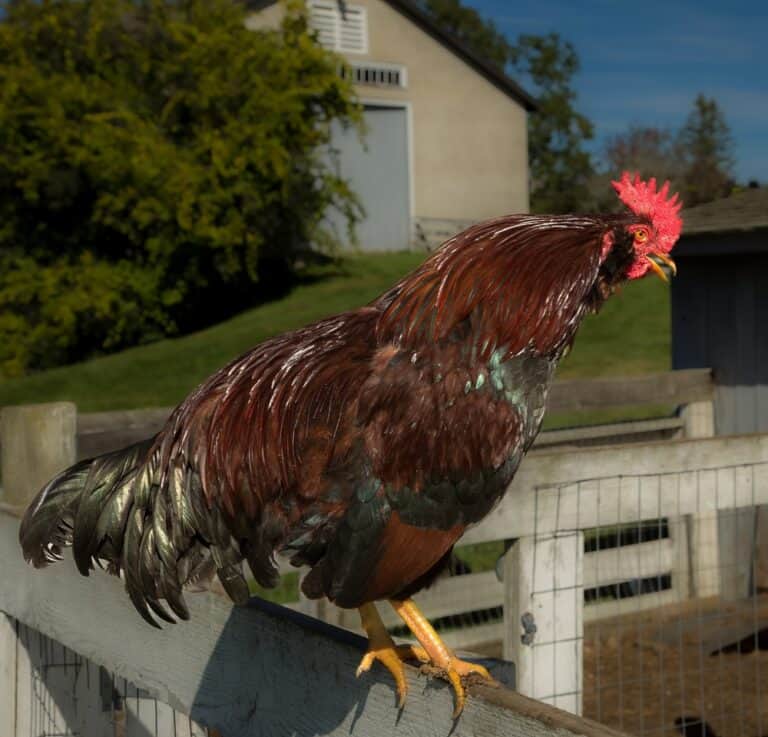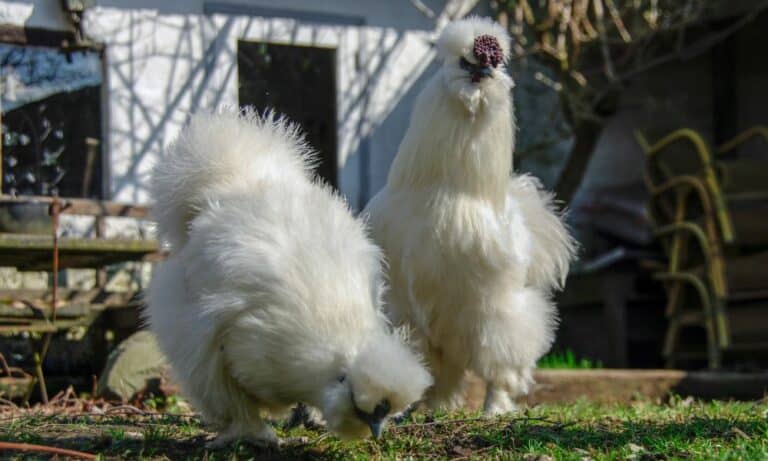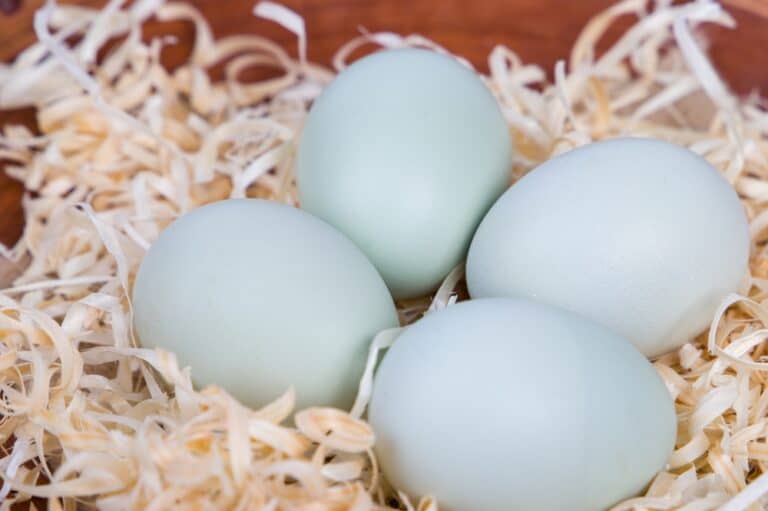If you play fantasy games or are a fan of myths, you might have heard of “redcap” dwarves. These dwarves are said to wear red caps and act aggressively toward humans. What you might not realize is that there is also a chicken breed by the same name.
If you haven’t heard of Redcap chickens, don’t feel embarrassed. Few people have actually heard of this chicken breed. It’s critically endangered and is one of the rarest breeds in the US according to the American Poultry Association.
What are Redcap chickens?
Redcap chickens are a special breed that hails from England. (You may have also heard them called Derbyshire Redcaps, which is the more specific moniker for the breed.) Their name comes from the large red rose comb on top of their heads. It literally looks like a cap!
Looks-wise, the cap sets them apart from other chickens. Their feathering is a deep red, with black tailfeathers that have an iridescent green shine. No one knows the true origins of Redcaps, but there are a couple of leads that people have tracked down.
One common belief is that they may be derived from the Golden Spangled Hamburg, or that the breed was developed and then split into two different directions. Another alleged ancestor of the Redcap is the Old English Game or Old English Pheasant Fowl.
Regardless of the origin, the truth is that this is an extremely rare chicken breed. It’s considered to be a critically-endangered chicken and is on the American Livestock Breeds Conservancy Watchlist.
What do Redcap chickens look like?
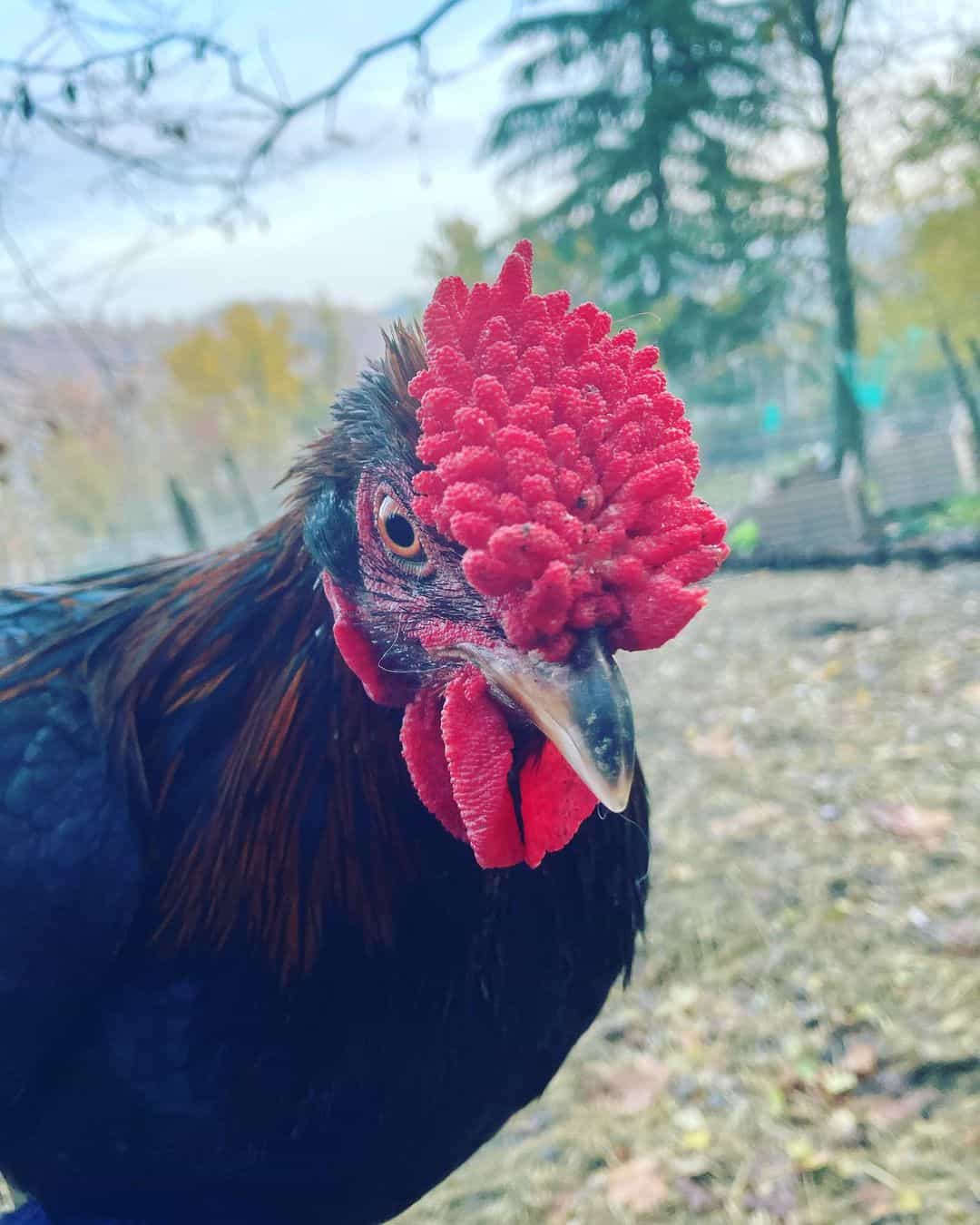
This breed is famous for its exceptional rose comb that features a bunch of different points plus one very long spike. The feathering, though, tends to be a bit more like currently-extinct breeds like the Lancashire Moonie and the Yorkshire Pheasant.
Roosters have red ear lobes, grey legs, black tail feathers, and reddish-brown plumage. In other words, their body feathers tend to look similar to a pheasant-style chicken. They also have red combs and wattles.
Hens have dark reddish-brown bodies with spangles. Their spangles tend to be blue-black, but you also will see orange-red spots near their hackles. They are a very pretty, fairly petite bird breed.
It’s worth noting that the standard of perfection according to breeders can change depending on the country you’re in.
What are Redcap chickens good for?
To a point, the Redcap chicken breed has become relegated to being part of a backyard flock or as a companion chicken. However, that wasn’t the case in the 19th century. They used to be quite profitable as farm chickens.
Traditionally, males and females were both used as small, light table meat birds. They also can lay pretty decent numbers of eggs for a heritage breed. Since there were chickens that were bred for egg laying in larger quantities, demand fell by the wayside here.
How good are Redcap chickens for meat production?
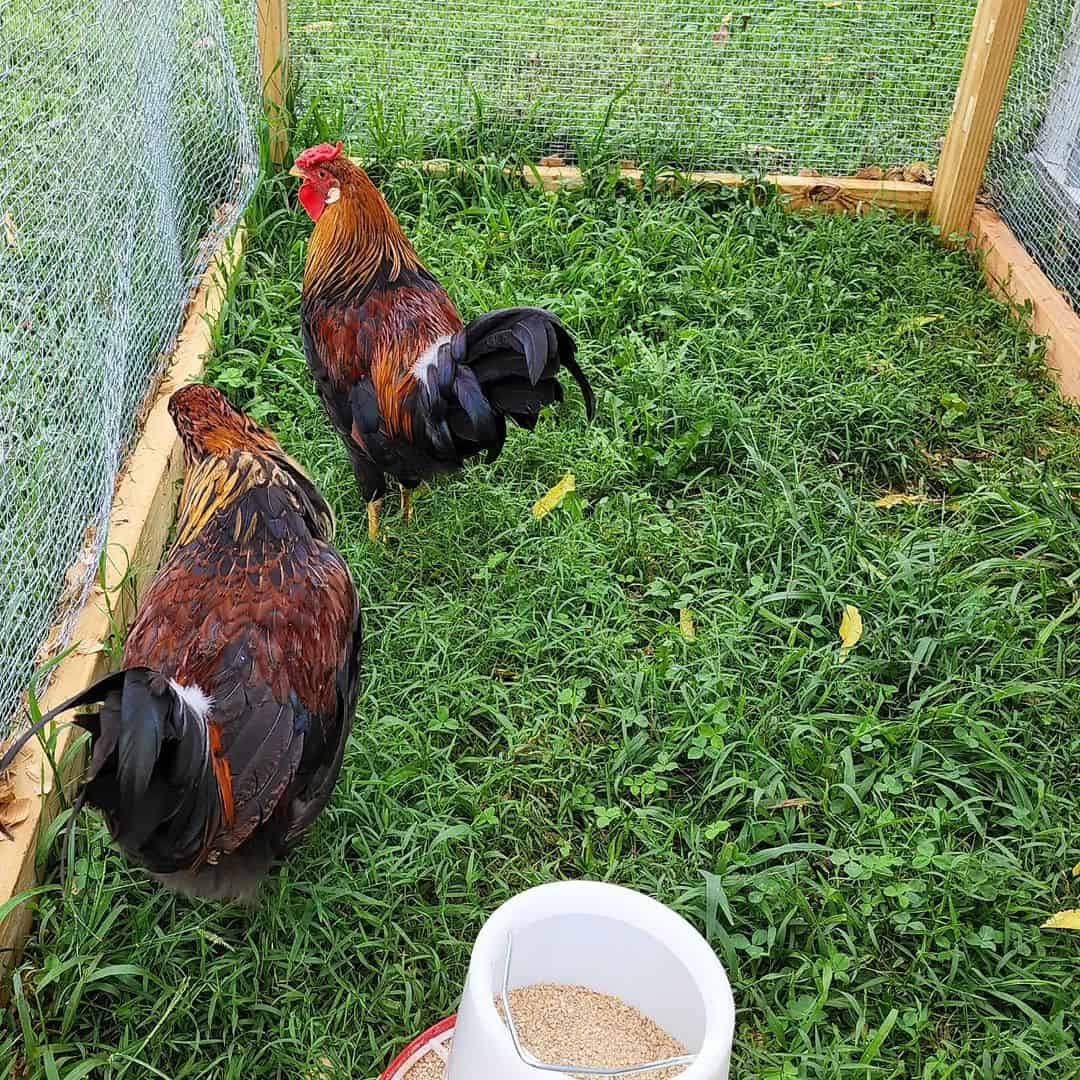
Redcap chickens are not the most common choice for meat production, and there is a good reason for it. This is a very slow-growing chicken breed that will take years to mature. They also get to be 6.5 to 8 pounds when they fully mature.
Generally speaking, Redcap meat tends to have a gamey taste and texture to it. So, it’s going to be an acquired taste for some. Many people tend to dislike the gamey taste, which is why it’s not as popular as a meat bird.
How good are Redcap chickens at laying eggs?
Getting Redcap hens is a good idea if you like fairly regular egg collections. A typical hen from this breed will lay between 170 to 200 eggs per year, so while it’s not phenomenal, it’s still fairly decent.
They always lay a white to cream-colored egg, despite having red earlobes. It’s a quirk of the breed, for sure. (Most chickens that have red ear lobes will lay brown eggs, for those not “in the know.”)
Do Redcap chickens get broody?
Part of the reason why this breed is having a hard time getting re-established (it’s critically endangered) is due to the lack of broodiness in hens. They are poor sitters and will not always make good mothers.
Do Redcap chickens make good pets?

It depends on how you raise them. They are not exactly the most sociable chickens and often have a temperament that is described as “wild.” Most people notice them by their proud strut, cautious behavior, and quiet demeanor.
When socialized well, these beautiful birds can make great pets and show birds. The best way to explain it is that this is a chicken breed that can be very loving. It’s a better breed for older kids who are a bit more mature and experienced with chicken raising.
If you have young children, do not get a Redcap for them. Loud noises can startle them. Roosters, in particular, can become aggressive if they hear loud noises or see young children trying to pick them up.
Are Redcap chickens noisy?
They can be, but they are far from the most talkative chickens. They generally keep to themselves and cluck at a low level. If they find themselves in a coop with a more aggressive bird, they may get loud.
Do Redcap chickens get along with other breeds?
For the most part, the answer is yes. Redcaps are the type of chicken that is calm unless bullied. They will get along with your flock until there is reason to fight. When they fight, they become very aggressive and very loud.
If you have a new Redcap that you want to introduce to your flock, we strongly suggest that you monitor them carefully for the first couple of weeks. Once they get used to the flock, there will be little reason to worry about them acting out.
Do Redcap chickens do well at shows?
Yes! Redcap chickens are critically endangered, which means that seeing a healthy bird of this breed at a show is almost always a shoo-in. They are very unique and can often take home awards simply due to their rarity alone.
How should you care for Redcap chickens?
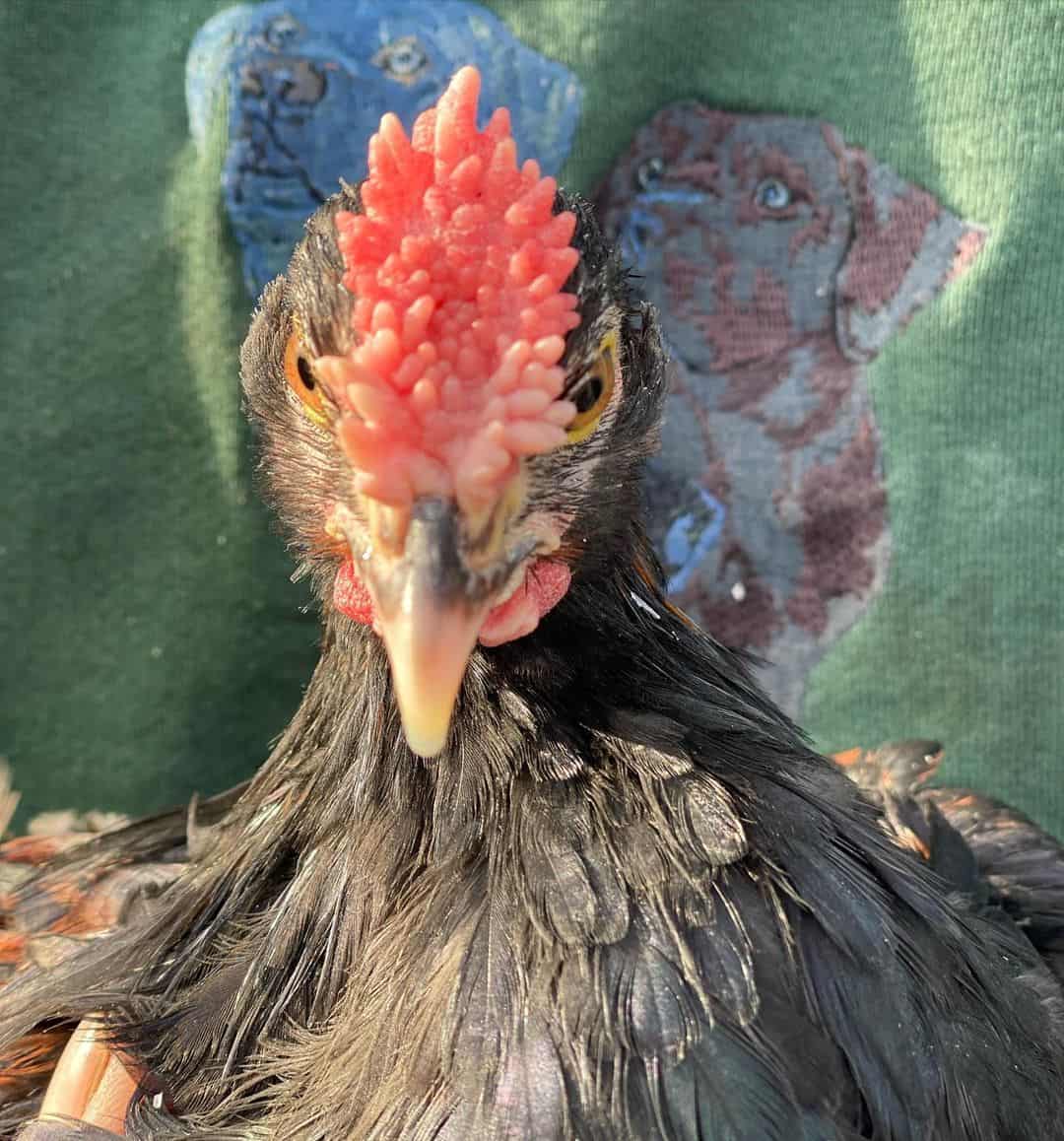
il_giardino_dei_polli
For the most part, this breed is quite hardy and healthy, with minimal health issues or behavioral issues. They will need to have preventative care for all the normal diseases and parasites like mites and worms. Aside from that, follow these instructions:
- Give them tons of space. A minimum of five square feet per bird is a must in the coop. These birds do not take well to confinement and often need tons of time to free-range. Confining them can lead to stress, sickness, and aggression.
- Socialize your chickens early and be patient. This is a chicken breed that can be excessively shy and even borderline feral if you don’t care to raise them well. Socialization is one of the biggest issues you will have with a Redcap.
- Get a tall, tall fence. If you are not careful, you are going to lose your chickens. These birds are excellent flyers, so they can actually hop tall fences and fall victim to predators. If you have a fox or hawk population, be careful and add additional protection.
- Consider getting calcium supplements to help birds that are laying eggs. This isn’t necessary, but it can help.
- Work on making a large free-range environment that features lots of amenities. This breed is famous for its love of foraging and wandering. They need to have ample space, a little heat outside, fresh water, and some shade. Seriously, work on the outdoors side of this.
- Keep an eye on their “caps” during winter. While Redcaps are hardy animals, they still can get cold. If you live in a cold region, it’s best to have a heat source outdoors and to cover their combs in petroleum jelly.
- Watch out for mites. Mites are always a problem with chickens, but this breed’s feathering can make them particularly prone to a mite infestation. You can spot treat them for mites, or just go for the full body.
- Consider breeding Redcaps. It’s important to emphasize that this breed is critically endangered—literally almost extinct. Redcaps are true gems in the world of heritage chickens. Breeding them is an ethical and smart way to preserve biodiversity.
- If you notice something strange with your Redcap, get them to a vet ASAP. This is a bird breed that really needs to be cared for. Every Redcap is precious. With proper care, they can live up to eight years.
Conclusion
A Redcap chicken is quite hard to come by, even if you have a lot of connections in the poultry world. They are critically endangered. If you see a large chicken with a red “beret-like” comb, then you are probably looking at one of the rarest breeds in the US and UK.
Iconic in its own way, getting a chicken of this breed will definitely set you apart from the rest…if you can find one, anyway.

